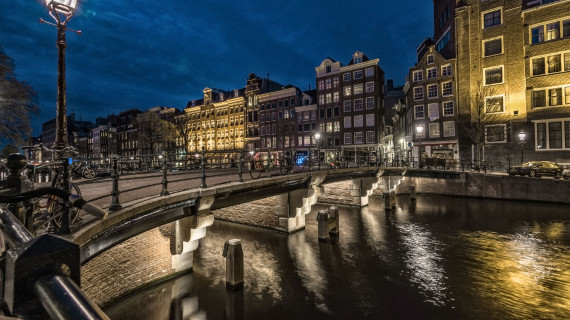Amsterdam Reloaded - AMS Stimulus project

What is the goal of the project?
Buildings in Amsterdam account for the majority of energy and material use, greenhouse gas emissions and waste production. 80% of the demand for the next century has already been constructed with many being historic buildings which are likely to become vacant and dilapidated. That is why new initiatives must be accommodated in existing buildings, by means of sustainable and adaptive reuse. However, the traditional approaches often fail. New, innovative business, administrative, financing and partnership models are needed to facilitate the maintenance and the adaptive reuse of historic buildings. At the same time, homes in cities are becoming less affordable and this is threatening the social resilience of metropolitan areas such as Amsterdam.
What is the result of the project?
The goal of this project is to develop a model for 2018 for innovation, business, administration, financing and partnerships in order to mobilise new investments for adaptive reuse of the heritage and to test this in Amsterdam by means of a local plan of action. The most important objectives include improving accommodation, affordability, enhancing citizen empowerment and reducing waste, material and energy use.
Who initiated the project and which organizations are involved?
AMS, Ymere, Stichting Nationaal Restauratiefonds, FGH Bank, European Investment Bank, Crimson
What is the next step?
A baseline study identifying key stakeholders, obstacles and enablers for the development of adaptive reuse of heritage buildings for residential purposes
in Amsterdam.A framework for the development of innovative business, governance, financing
and partnership models for adaptive reuse of heritage, aimed at affordable
housing. This framework will be designed and tested on a pilot project in Amsterdam, both theoretically (through amulti- stakeholder validation seminar) and potentially, empirically (through implementation of a local action plan). Henceforth, after completing the Stimulus project, the researchers aim to further develop and use this framework to support adaptive reuse of heritage buildings for affordable housing elsewhere in Europe.A local action plan for the development of a concrete project of adaptive reuse of heritage buildings for residential purposes in Amsterdam, applying a user-led approach, and the framework developed in this research.
A written final report in October 2017, presenting the research results, conclusions and recommendations, and stating the replication and upscaling potential, nationally and internationally.



